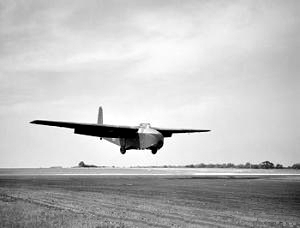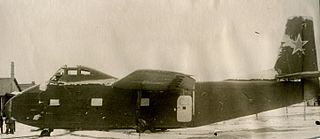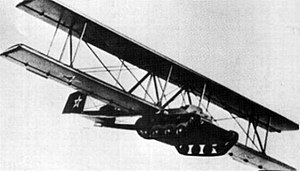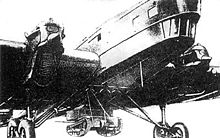
The BT tanks were a series of Soviet light tanks produced in large numbers between 1932 and 1941. They were lightly armoured, but reasonably well-armed for their time, and had the best mobility of all contemporary tanks. The BT tanks were known by the nickname Betka from the acronym, or its diminutive Betushka. The successor of the BT tanks was the famous T-34 medium tank, introduced in 1940, which would replace all of the Soviet fast tanks, infantry tanks, and medium tanks in service.

The M22 Locust, officially Light Tank (Airborne), M22, was an American-designed airborne light tank which was produced during World War II. The Locust began development in 1941 after the British War Office requested that the American government design a purpose-built airborne light tank which could be transported by glider into battle to support British airborne forces. The War Office had originally selected the Light Tank Mark VII Tetrarch light tank for use by the airborne forces, but it had not been designed with that exact purpose in mind so the War Office believed that a purpose-built tank would be required to replace it. The United States Army Ordnance Department was asked to produce this replacement, which in turn selected Marmon-Herrington to design and build a prototype airborne tank in May 1941. The prototype was designated the Light Tank T9 (Airborne), and was designed so that it could be transported underneath a Douglas C-54 Skymaster transport aircraft, although its dimensions also allowed it to fit inside a General Aircraft Hamilcar glider.

The Christie suspension is a suspension system developed by American engineer J. Walter Christie for his tank designs. It allowed considerably longer movement than conventional leaf spring systems then in common use, which allowed his tanks to have considerably greater cross-country speed. The system was first introduced on his M1928 design, and used on all of his designs until his death in 1944.

The Light Tank Mk VII (A17), also known as the Tetrarch, was a British light tank produced by Vickers-Armstrongs in the late 1930s and used during the Second World War. The Tetrarch was the latest in the line of light tanks built by the company for the British Army. It improved upon its predecessor, the Light Tank Mk VIC, by introducing the extra firepower of a 2-pounder gun. The War Office ordered 70 tanks, an order that eventually increased to 220. Production was delayed by several factors and only 100 to 177 of the tanks were produced.

The Glider Pilot Regiment was a British airborne forces unit of the Second World War, which was responsible for crewing the British Army's military gliders and saw action in the European theatre in support of Allied airborne operations. Established during the war in 1942, the regiment was disbanded in 1957.

The Antonov A-40 Krylya Tanka was a Soviet attempt to allow a tank to glide onto a battlefield after being towed aloft by an airplane, to support airborne forces or partisans. A prototype was built and tested in 1942, but was found to be unworkable. This vehicle is sometimes called the A-40T or KT.

The General Aircraft Limited GAL. 49 Hamilcar or Hamilcar Mark I was a large British military glider produced during the Second World War, which was designed to carry heavy cargo, such as the Tetrarch or M22 Locust light tank. When the British airborne establishment was formed in 1940 by the order of Prime Minister Winston Churchill it was decided to develop a large glider which would be able to transport heavy equipment in support of airborne troops. General Aircraft Limited were chosen in January 1941 to develop this glider, which they designated the GAL. 49 'Hamilcar'. It was designed to transport a light tank or two Universal Carriers. A number of problems, which included vacillation by the War Office on the number of gliders it wanted and poor management by GAL, led to delays in the production of the Hamilcar and it was not until mid-1943 that the first production glider was assembled. These problems were only partially solved and production of the glider continued to be slow, hampered by difficulties in finding suitable locations to store and construct them once their parts were produced. A total of 344 Hamilcars had been built when production ended in 1946.

The General Aircraft GAL.48 Hotspur was a military glider designed and built by the British company General Aircraft Ltd during World War II. When the British airborne establishment was formed in 1940 by order of Prime Minister Winston Churchill, it was decided that gliders would be used to transport airborne troops into battle. General Aircraft Ltd were given a contract by the Ministry of Aircraft Production in June 1940 to design and produce an initial glider for use by the airborne establishment, which resulted in the Hotspur.

Glider infantry was a type of airborne infantry in which soldiers and their equipment were inserted into enemy-controlled territory via military glider. Initially developed in the late 1930s by Germany, glider infantry units were used extensively during World War II but are no longer used by any modern military.

Military gliders have been used by the militaries of various countries for carrying troops and heavy equipment to a combat zone, mainly during the Second World War. These engineless aircraft were towed into the air and most of the way to their target by military transport planes, e.g., C-47 Skytrain or Dakota, or bombers relegated to secondary activities, e.g., Short Stirling. Most military gliders do not soar, although there were attempts to build military sailplanes as well, such as the DFS 228.

The Tank, Light, Mk VIII (A25), also known as the Harry Hopkins, after American President Roosevelt's chief diplomatic advisor, was a British light tank produced by Vickers-Armstrong during the Second World War. The Mk VIII was the last in the line of light tanks the company had built for the British Army, and was intended to be the successor of the previous light tank designed by Vickers-Armstrong, the Mk VII Tetrarch. A number of changes were made to the Mk VIII, most notably increasing its width, length and weight and also increasing the thickness of the armour. The design of the tank was submitted to the War Office in late 1941, with an initial order for 1,000 models being made by the Tank Board of the War Office in the same month, a number that increased to 2,410 in November. Production began in June 1942 but immediately began encountering problems with the tank, and a number of modifications had to be made to the design after complaints were made by the War Office and the Fighting Vehicle Proving Establishment. These problems were so acute that only 6 tanks had been produced by mid-1943, and only 100 when production ended in February 1945.

John Walter Christie was an American engineer and inventor. He is known best for developing the Christie suspension system used for several World War II-era tank designs, most notably the Soviet BT and T-34 tanks series, and the United Kingdom Covenanter and Crusader Cruiser tanks, as well as the Comet heavy cruiser tank.

The Baynes Bat was an experimental glider of the Second World War, designed by L. E. Baynes. It was used to test the tailless design that he had suggested as a means to convert tanks into temporary gliders so they could be flown into battle.

The Gribovsky G-11 was a Soviet light troop/cargo military glider of World War II.

The Yakovlev Yak-14 was the largest assault glider ever to enter service with the Soviet Air Force. It was introduced in 1949, at a time when other air forces were abandoning the glider concept. In 1950 a Yak-14 became the first glider to fly over the North Pole.

A glider is a fixed-wing aircraft that is supported in flight by the dynamic reaction of the air against its lifting surfaces, and whose free flight does not depend on an engine. Most gliders do not have an engine, although motor-gliders have small engines for extending their flight when necessary by sustaining the altitude with some being powerful enough to take off by self-launch.

A light tank is a tank variant initially designed for rapid movements in and out of combat, to outmaneuver heavier tanks. It is smaller in size with thinner armor and a less powerful main gun, tailored for better tactical mobility and ease of transport and logistics. They are primarily employed in the screening, armored reconnaissance, skirmishing, artillery observation, and supplementing landing operations in a fire support role of expeditionary forces where larger, heavier tanks are unavailable or have difficulties operating safely or efficiently.
The Airborne Forces Experimental Establishment (AFEE) was a branch of the British Air Ministry, that researched and developed non-traditional airborne applications, such as gliders, rotary wing aircraft, and dropping of personnel and equipment by parachute, in the period 1942–1950.

The Special number 3 light tank Ku-Ro was an experimental Japanese winged light tank project, developed during World War II. It is one of the notable aircraft concepts developed during that war.



















